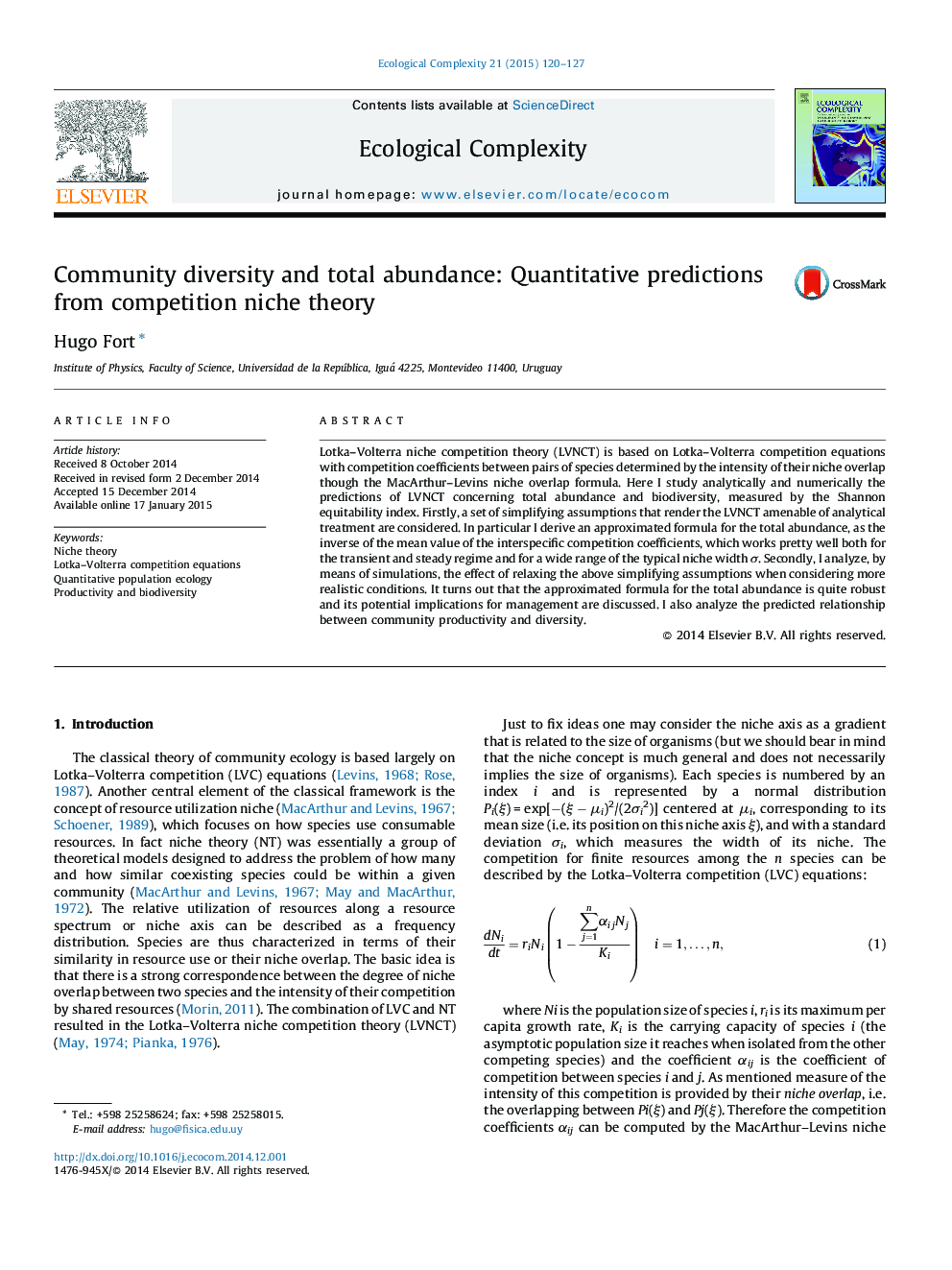| Article ID | Journal | Published Year | Pages | File Type |
|---|---|---|---|---|
| 4372409 | Ecological Complexity | 2015 | 8 Pages |
•Results from niche competition for different competition matrices α are analyzed.•The total abundance TA can be approximated as the inverse of the mean of α, 1/α.•This formula is robust, even for small n, making it useful for species management.•TA reaches quickly 1/α but before equilibrium large changes of diversity occur.•The wider the mean niche width the lower the productivity and diversity.
Lotka–Volterra niche competition theory (LVNCT) is based on Lotka–Volterra competition equations with competition coefficients between pairs of species determined by the intensity of their niche overlap though the MacArthur–Levins niche overlap formula. Here I study analytically and numerically the predictions of LVNCT concerning total abundance and biodiversity, measured by the Shannon equitability index. Firstly, a set of simplifying assumptions that render the LVNCT amenable of analytical treatment are considered. In particular I derive an approximated formula for the total abundance, as the inverse of the mean value of the interspecific competition coefficients, which works pretty well both for the transient and steady regime and for a wide range of the typical niche width σ. Secondly, I analyze, by means of simulations, the effect of relaxing the above simplifying assumptions when considering more realistic conditions. It turns out that the approximated formula for the total abundance is quite robust and its potential implications for management are discussed. I also analyze the predicted relationship between community productivity and diversity.
